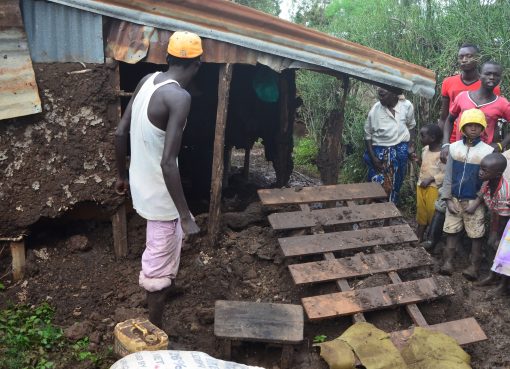The Government is set to construct a landing site on Lake Naivasha costing Sh100 million.
Making the announcement in Naivasha, Cabinet Secretary (CS) for Mining, Blue Economy and Maritime Affairs Salim Mvurya Mgala said the landing site will have a cold room for processing and another cold room where the fisher folk can store the fish at the right temperature.
He said this is intended to ensure that the fish the fishermen catch remains in good condition for a longer time to reach the market. He was accompanied by Blue Economy and Marine Fisheries Affairs Principal Secretary (PS) Ms. Betsy Muthoni Njagi her counterpart in the State Department for Mining Mr Elijah Mwangi.
The project is part of the bigger plan announced by the Government last year where Sh900 million was set aside for the construction of modern landing sites in various parts of the country to improve fish catches and meet the growing demand for fish.
During the event, Mvurya also handed over one patrol boat worth Sh50,000 to the lake patrol team to improve security and help stem illegal fishing on the lake. It’s one of six boats that his Ministry had bought at a total cost of Sh306 million to help patrol the fishing waters in the country.
The CS noted that to boost fish production in the country, centres of excellence have been established to help address the issue of the high cost of fish feed and lead to the production of high-quality fish fingerlings in the country.
“As part of the government’s commitment in enhancing the aquaculture value chain in the country, we have established Sh1 billion Kabonyo Fisheries Aquaculture Service and Training Centre of Excellence in Kisumu County which will supply about seven million fish seed ( fingerlings) to the farmers,” Mvurya said.
He observed that this is in line with the President’s directive released last year banning the importation of tilapia variety of fish so that the country can be self-sustaining as far as Tilapia fish production is concerned.
“We should export not import tilapia because we have enough of it if properly harnessed,” Mvurya added.
The CS further announced that his ministry will train coxswains on Lake Naivasha for free to equip them with skills and help improve their safety while in the deep waters.
He advised the fisher folks to register in a cooperative society to reap maximum benefit from their fishery activities.
In November last year, the county government of Nakuru restocked Lake Naivasha with Tilapia fingerlings worth Sh2.5 million as part of efforts to replenish the dwindling fish stocks in the freshwater body.
Currently, there are 300 licensed fishing boats on Lake Naivasha manned by youth groups to ensure increased employment opportunities while also ensuring sustainable exploitation of the fisheries resources.
The county has only five fish landing beaches including Central Beach, Karagita, Kamere, Tarambete and Oloiden. But only Central Beach had been gazetted leaving the other four without legal and official land documents.
As of December last year, Nakuru County recorded fish catch weighing a total of 2,045,856 kilogrammes of fish catch with an estimated market value of Sh248 million. Tilapia species is the most common fish according to the data captured.
The lake has for years been supporting thousands of families who depend on her resources while contributing to the economic development of the lakeside town. The freshwater lake is 139 square kilometres. Some of the challenges facing the water body are massive pollution, human encroachment and abstraction.
Only five species of fish are present on the lake, all of which have been introduced. They are Oreochromis leucostictus, Tilapia zillii, Micropterus salmoides (largemouth bass), Barbus amphigramma and Poecilia reticulata (guppy).
Ms. Njagi had earlier quoted saying Kenya last year produced over 30,000 metric tonnes of fish which has been a big improvement from the previous years where the country produced as low as 4,000 metric tonnes annually, with aquaculture accounting for 2.7 per cent and the annual supply gap of 50,000 metric tonnes of fish is projected to increase to 75,000 by 2030 if annual per capita fish consumption remains constant at 4.3 kg.
By Mabel Keya – Shikuku




